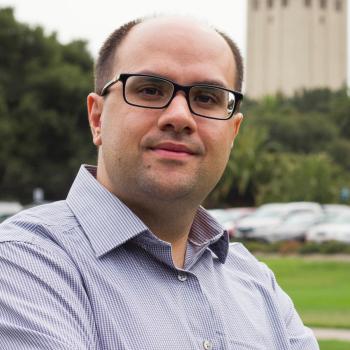What Role can Machine Learning play in Signal Processing and Communication System Design?
The Montreal Chapter of the IEEE Signal Processing (SP) Society cordially invites you to attend the following talk, to be given by Dr. Nariman Farsad from Department of Electrical Engineering at Stanford University, Stanford, CA, USA, on Wednesday May 30th 2018, from 11h30 to 12h30pm at Concordia University (EV Building, Room 3.309).
Date and Time
Location
Hosts
Registration
-
 Add Event to Calendar
Add Event to Calendar
- 1515 Saint-Catherine St. West
- Montreal, Quebec
- Canada H3G 2W1
- Building: EV-Biulding
- Room Number: 3.309
- Contact Event Host
-
Prof. Arash Mohammadi
Concordia Institute for Information System Engineering (CIISE)
Concordia University,
Montreal, QC, H3G 2W1, Canada
Speakers
 Dr. Nariman Farsad of Stanford University
Dr. Nariman Farsad of Stanford University
What Role can Machine Learning play in Signal Processing and Communication System Design?
Design and analysis of signal processing and communication systems have traditionally relied on mathematical and statistical channel models that describe how a signal is corrupted during transmission. In particular, communication techniques such as modulation, coding, and detection that mitigate performance degradation due to channel impairments are based on such channel models and, in some cases, instantaneous channel state information about the model. However, there are propagation environments where this approach does not work well because the underlying physical channel is too complicated, poorly understood, or rapidly time-varying. In these scenarios, we propose a completely new approach to communication system design based on machine learning (ML). In this approach, the design of a particular component of the communication system (e.g. the coding strategy or the detection algorithm) utilizes tools from ML to learn and refine the design directly from training data. The training data that is used in this ML approach can be generated through models, simulations, or field measurements. We present results for three communication design problems where the ML approach results in better performance than current state-of-the-art techniques: signal detection without accurate channel state information, signal detection without a mathematical channel model, and joint source-channel coding of text. Broader application of ML to communication system design in general and to millimeter wave and molecular communication systems, in particular, is also discussed.
Biography:
Nariman Farsad is currently a Postdoctoral Fellow with the Department of Electrical Engineering at Stanford University, where he is a recipient of Natural Sciences and Engineering Research Council of Canada (NSERC) Postdoctoral Fellowship. His research interests are on improving the performance of communication systems using a data-driven approach based on machine learning and deep learning, and on emerging communication technologies such as molecular communication. Nariman has won the second prize in 2014 IEEE ComSoc Student Competition: Communications Technology Changing the World, the best demo award at INFOCOM’2015, and was recognized as a finalist for the 2014 Bell Labs Prize. He has been an Area Associate Editor for IEEE Journal of Selected Areas of Communication--Special Issue on Emerging Technologies in Communications, and a Technical Reviewer for a number of journals including IEEE Transactions on Signal Processing, and IEEE Transactions on Information Theory. He was also a member of the Technical Program Committees for the ICC’2015-2018, BICT’2015, GLOBCOM’2015-2018.

